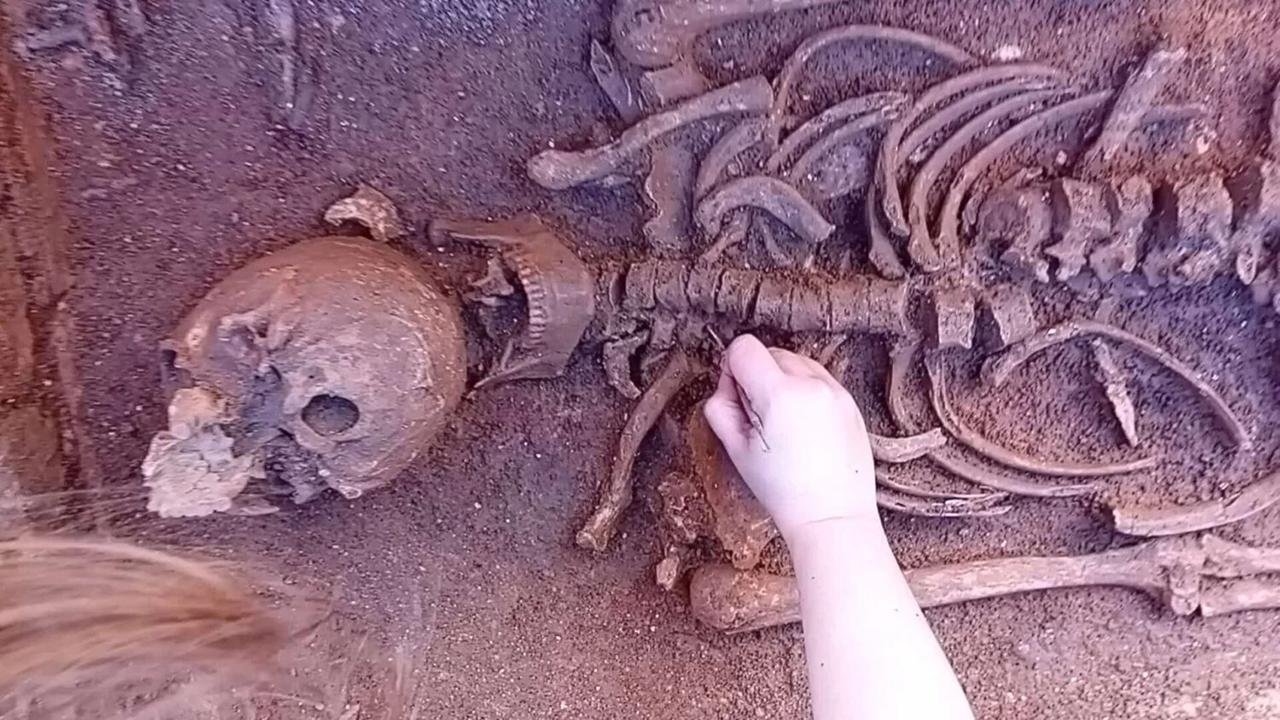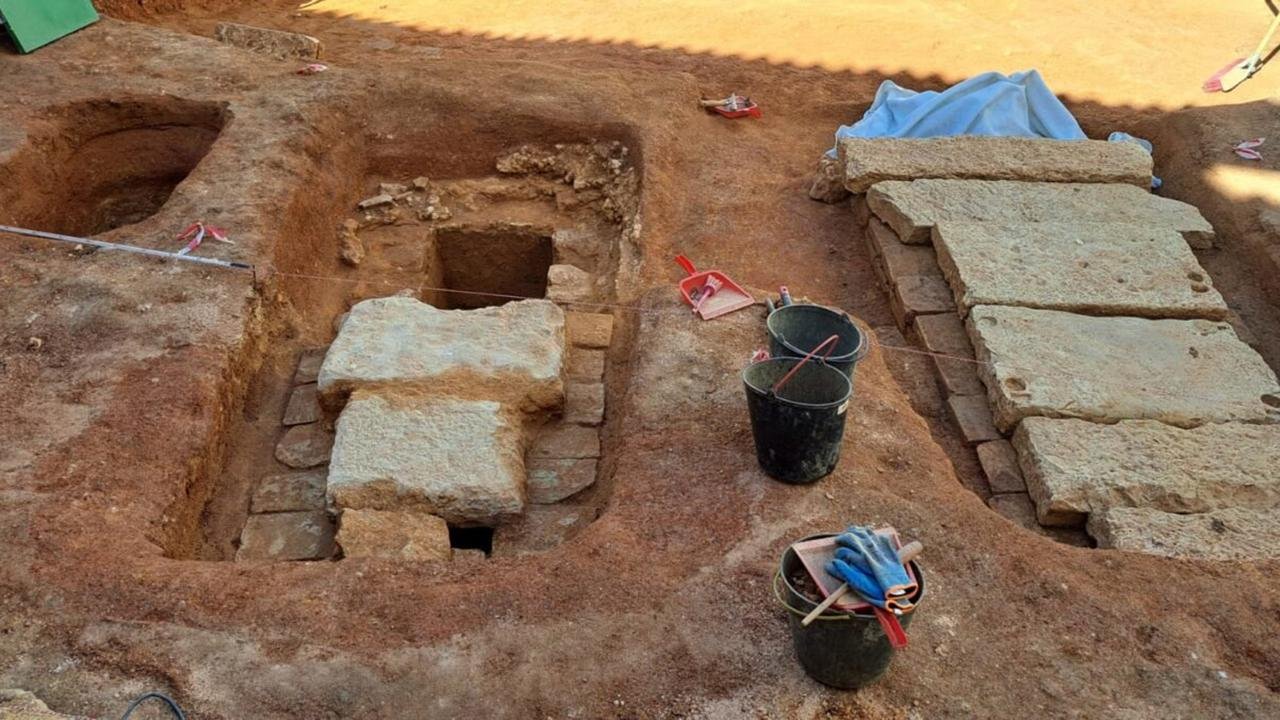Archaeologists excavating a former bus depot in Faro, southern Portugal, have uncovered three graves from the ancient Roman city of Ossónoba.
 Credit: ERA Arqueologia
Credit: ERA Arqueologia
The graves, discovered by a team from ERA Arqueologia, contained the remains of a man, a young woman, and a baby, all sealed with limestone slabs likely taken from older monumental buildings. The site, spanning 5,000 square meters, was earmarked for a future real estate development.
Francisco Correia, the project’s head archaeologist, said in a statement that the discoveries were made in a workshop and are believed to date from the 5th or 6th century. The team, led by Francisco Correia alongside archaeologists Camila Lacueva and João Martins, meticulously excavated the area, unearthing not only human remains but also remnants of Roman structures and artifacts indicative of daily life during the period.
Biological anthropologist Cláudia Maio highlighted the apparent looting of the graves in the past and suggested that items such as bracelets, necklaces, and rings may have been taken. Despite this disturbance, the careful construction of the graves hints at the social and economic status of the individuals interred within them. Maio noted the elaborate nature of the burial sites which indicates a level of care and respect afforded to the deceased.
 Credit: ERA Arqueologia
Credit: ERA Arqueologia
The proximity of the graves suggests the possibility of familial ties, though definitive conclusions remain elusive. Maio remarked: “We like to think so, don’t we? One male, one female, and a child, moreover, in graves so close together and without us having verified the presence of others nearby. But we can’t conclude anything.”
The team plans to conduct DNA tests and isotopic analysis on the skeletal remains to glean further insights. These techniques could reveal familial relationships, dietary habits, and potential origins of the individuals.
While initial studies suggested a residential or industrial focus, the discovery of the graves near significant landmarks indicates a complex urban landscape in Ossónoba.
In addition to the human remains, the excavation yielded a wealth of Roman artifacts, including ceramics, bone dice, nails, pins, and coins minted during the reign of Emperor Constantine the Great. Furthermore, remnants of a possible dye factory hinted at the city’s industrial activities.
The meticulous archaeological work undertaken prior to the real estate development exemplifies a proactive approach to heritage preservation. Joaquim Ferreira, the project developer’s representative, stressed the importance of conducting thorough archaeological ᴀssessments before commencing construction projects. This sentiment was echoed by Miguel Lago, executive director of ERA Archaeology, who advocated for similar practices in other projects of archaeological significance.
As the ERA Arqueologia team completes the processing of collected materials, anticipation builds for the next phase of research and analysis.





